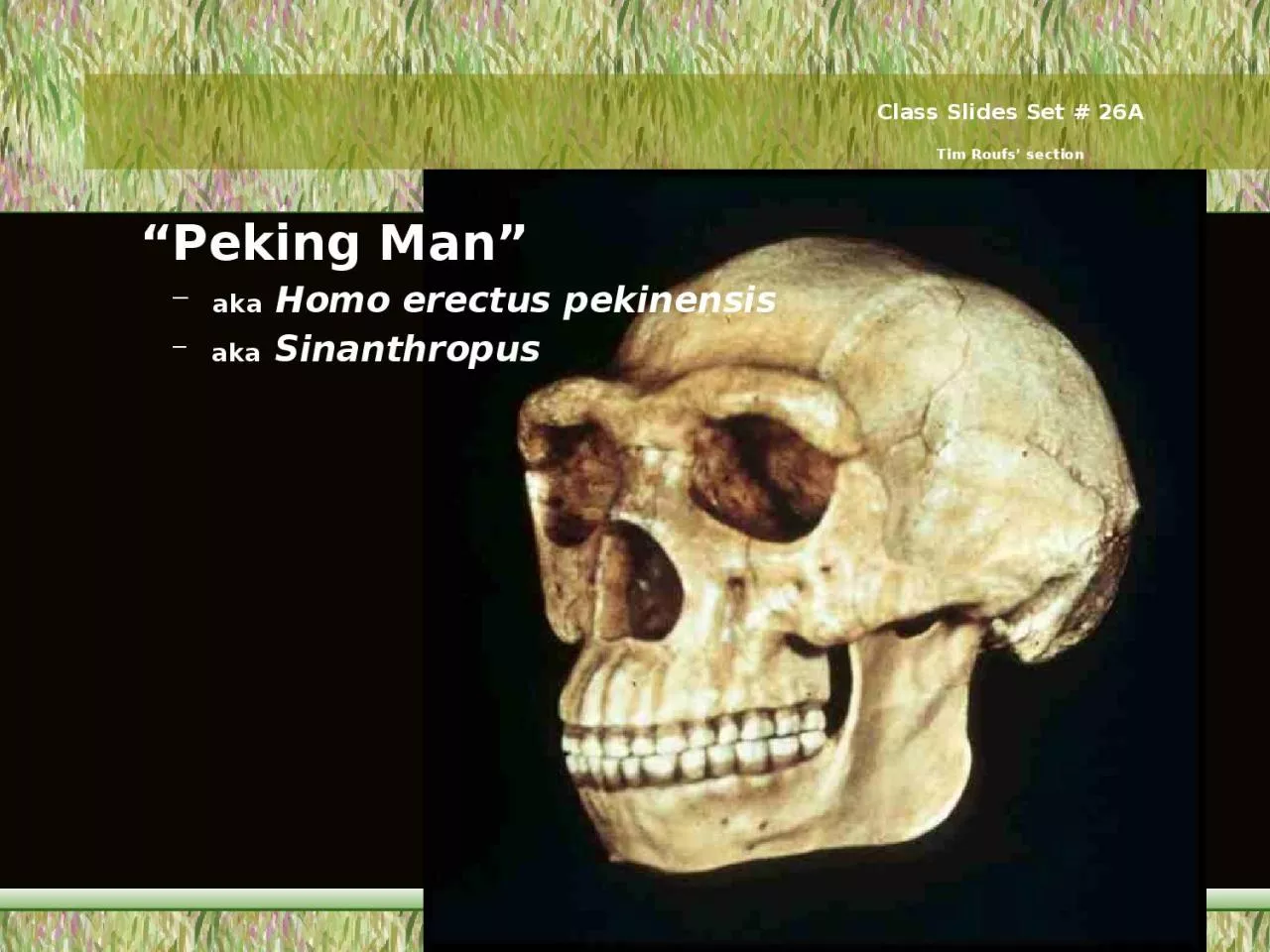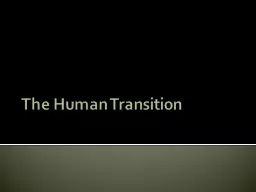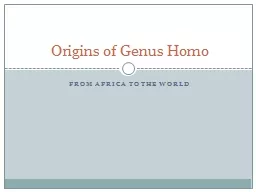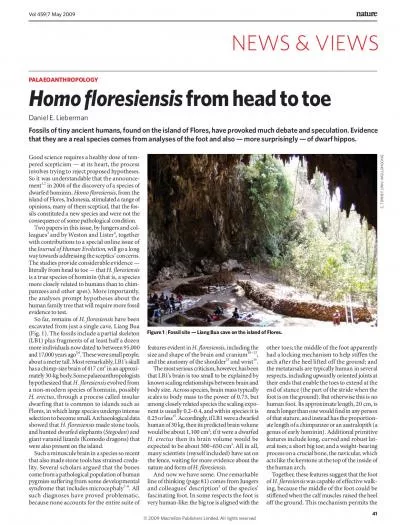PPT-“Peking Man” aka Homo erectus
Author : HappyHusky | Published Date : 2022-07-28
pekinensis aka Sinanthropus Class Slides Set 26A Tim Roufs section Time 23 July 2001 Time 23 July 2001 Homo Genus Homo Species rudolfensis early habilis
Presentation Embed Code
Download Presentation
Download Presentation The PPT/PDF document "“Peking Man” aka Homo erectus" is the property of its rightful owner. Permission is granted to download and print the materials on this website for personal, non-commercial use only, and to display it on your personal computer provided you do not modify the materials and that you retain all copyright notices contained in the materials. By downloading content from our website, you accept the terms of this agreement.
“Peking Man” aka Homo erectus: Transcript
Download Rules Of Document
"“Peking Man” aka Homo erectus"The content belongs to its owner. You may download and print it for personal use, without modification, and keep all copyright notices. By downloading, you agree to these terms.
Related Documents














